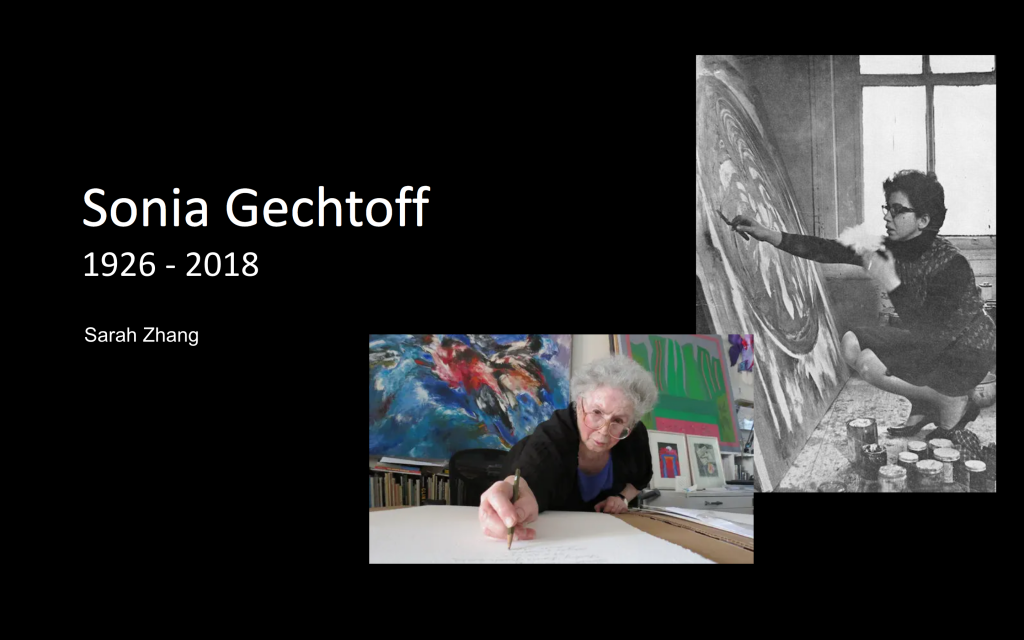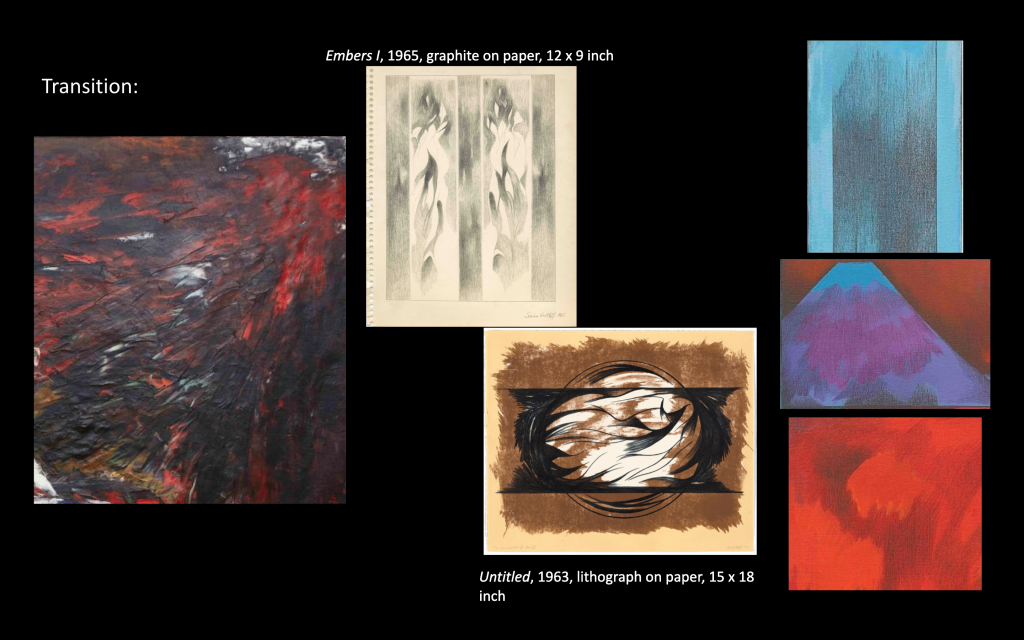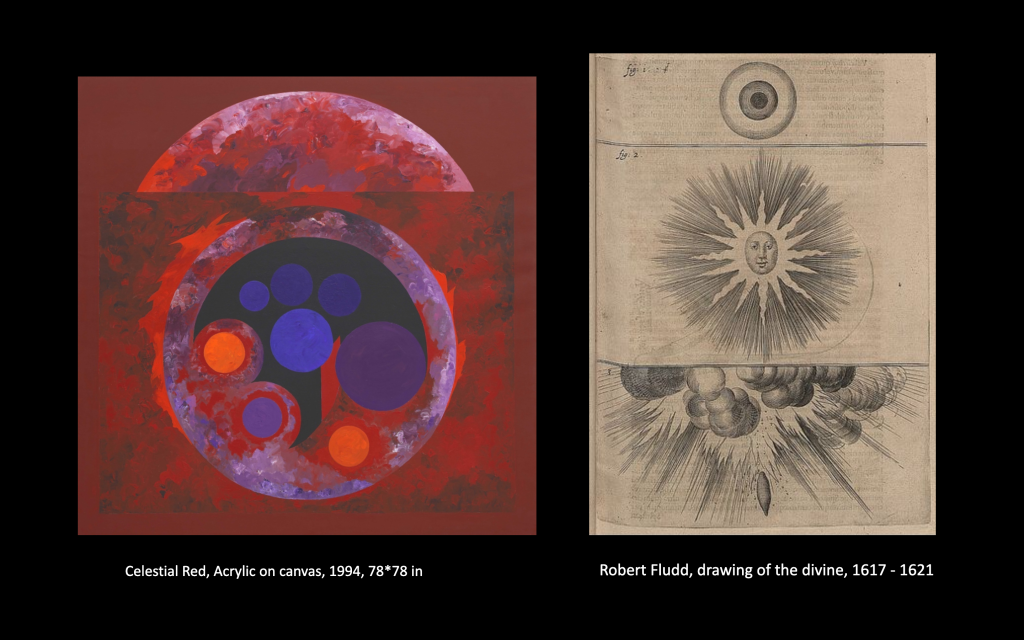Presentation Slides
https://docs.google.com/presentation/d/1x6chJoR08cS9mSPYj4bQ4rj-y3ONIy3wSSJgasYIf1k/edit#slide=id.p1
Sonia Gechtoff is born in an artist family in Philadelphia. Her mother managed art galleries in San Francisco, California, and her father was a very successful artist from Ukraine, who went on to work as Abstract Expressionist and futurist. In 1950 she graduated from the School of Industrial Art, which is now called School of Philadelphia Museum Art. There she received rigorous academic art training, but she knew that such systematic art wasn’t what she wanted. In 1951 she relocated to San Francisco, and enrolled in California School of Fine Arts, where she was influenced by many of the most respected abstract artist at that time, for example Hans Hofmann. In 1954 she already gained national recognition and her works were exhibited in Guggenheim Museum’s Younger American Painters alongside Jackson Pollock. In 1958 she moved to New York. During this period of time her inspirations mainly came from the classical architectures and the sea. She passed away in New York in 2018.


Her early stage of artist career was a time of expansion. The art stage in San Francisco treated women more equally than in New York. There she was exposed to two styles of artistic expression, the school that centered in California School of Fine Arts, with Clyfford Still being one of the most famous representative, and the school centered in Berkeley that focused more on figurative paintings. The artist Clyfford Still was very influential to Gechtoff. She started to let the medium collaborate with her body and her subconscious in whatever way it wanted, and in the process she developed an expressive, emotive and abstract style.

Her early paintings are marked by powerful strokes, which she achieved not just by twisting the wrist but also putting her entire weight onto her arm and “soul” into the motion. Her use of palette knife to mobilize a large amount of paint was a signature not only for her early works but later ones as well.
The first painting shown bellow, The Chase, marks a transition. The black background gives a sense of depth and richness, which ties to the sensations provided by earth. The strokes suggest flames, winds and waves. The second painting, The Angel, is an abstracted self portrait. Through its vibrant colors and think energetic brushstrokes, Gechtoff creates the suggestion of a central figure, whose abundant arms or wings stretch across the picture plane. Unlike the Abstract Expressionist that preferred “all over” paintings and rejected traditional composition as a way of expressing a subject, Gechtoff maintained a traditional sense of decorative, expressive power of composition.

At this point, her most famous subjects in her arts, what Gechtoff herself termed as “Icons” appeared. These icons are spherical structures that convey religious references and imageries. However, Gechtoff never specifically clarified what they are referring to. In the 80s, the artist shifted her focus from gesture and nuanced her interests in nature and architecture by reducing them to a surface treatment, boosted by the textural details of her paintings.

Gechtoff had always been aware about what is happening in other cultures. Here her painting draws reference from the Ukiyo-e by Utagawa Hiroshige.

The painting Paestum is named after the ancient Greek colony, famous for its three temples, in southern Italy. Similar columns can be found in the lower portion of Paestum. It is a painting of a deep violet portal, buttressed by the columns on both sides that opens onto a fiery world. Set against a black background and surrounded by jagged, red, and smoldering form, with the moon peering above it, the portal separates us from the sacred fire beyond. By connecting the civilized world, represented by the columns, with the primeval fire, Gechtoff collapses the measurable and immeasurable notions of time and space.

The icons are referring to celestial bodies in this painting. It is suspected, but never confirmed by the artist herself, that the inspiration of this painting comes from the drawing of the divine by the English physician and polymath Robert Fludd. Again Gechtoff is collapsing unmeasurable and limitless time and space onto a single canvas. The colors can be perceived as symbols of fire and water. Although appeared as if flat, the artist created depth by layering the celestial bodies, not only as a barrier but also to imply that what is divine is out of reach.

Presentation Handout



